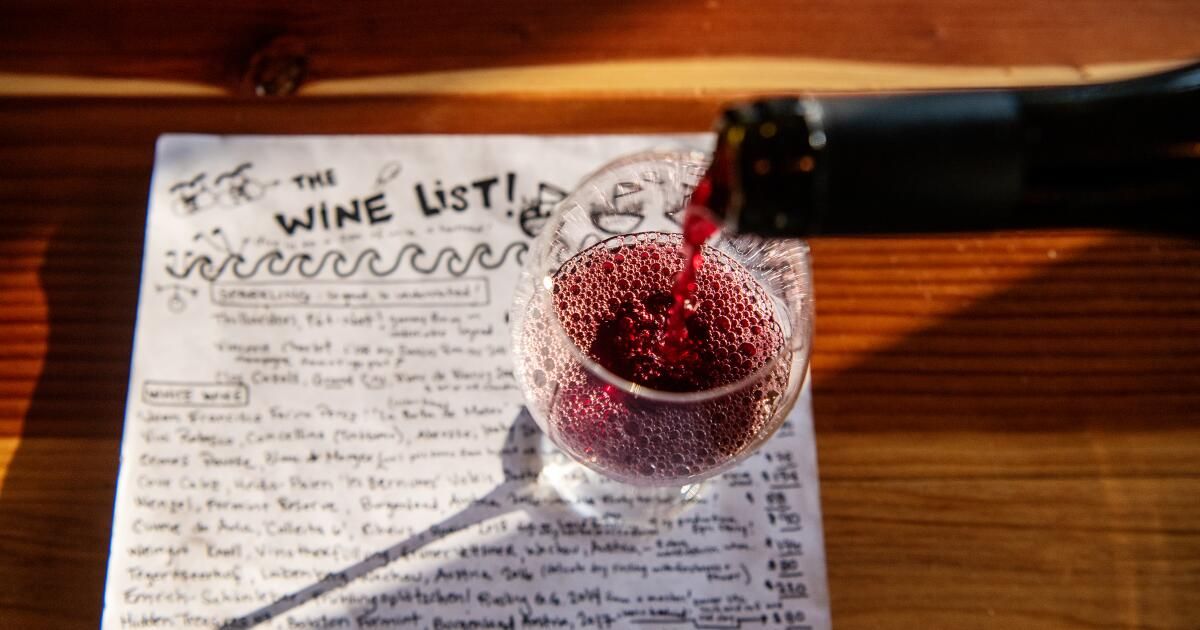If you're one of the millions of people around the world who experience headaches from drinking even a few sips of red wine, a new study could explain it and maybe even help solve the problem.
According A study According to a trio of scientists from Northern California, published this week in the journal Scientific Reports, the cause could be quercetin: a flavonoid found in foods such as onions, kale and seeds. Quercetin is especially prevalent in red wine grapes.
“It's an interesting new theory,” said study author Dr. Andrew Waterhouse, a wine chemist and professor emeritus at UC Davis.
On its own, quercetin is not toxic, but when ingested with alcohol and converted to another form, quercetin glucuronide, the study found that it can prevent the human body from metabolizing and detoxifying the alcohol in wine.
This can cause the buildup of a chemical compound called acetaldehyde—a culprit that also contributes to hangovers. A primary enzyme converts acetaldehyde into something less toxic, and based on the new findings, this could be the key to understanding red wine headaches.
The goal of the study was twofold: to help sufferers of red wine headaches identify the cause and hopefully avoid it in the future, and to help scientists and doctors understand the nature of migraines and the mechanisms of headaches in general.
Waterhouse previously attempted to answer a related question for a local winemaker who said he got headaches from drinking high-alcohol wines; While she couldn't solve that riddle, she got the wheels turning. She contacted neurologist and headache specialist Dr. Morris Levin, director of the Headache Center at the University of California, San Francisco, who helped write the study.
Levin and his colleagues treat patients with a variety of headaches; Of the patients Levin sees, he says most find drinking red wine a problem.
“One of the things I've noticed throughout my career is how common it is for people to get a headache from drinking red wine,” Levin said. “You can get a headache after drinking white wine, you can get a headache after drinking any type of alcohol, but red wine is a really common cause and it's a centuries-old mystery as to why that happens.”
Waterhouse's theory started simply: There are often more phenolic compounds in red wine than in white wine, and one of them is known to relax blood vessels, which can cause headaches. But, Levin noted, severe headaches are often caused by inflammation, which phenols are not likely to cause.
Waterhouse racked her brain for components in wine that might cause inflammation and remembered the flushing reaction, like referred to by LA Times columnist Lucas Kwan Peterson and many others as “Asian glow” – which some people tend to have when they drink even a few sips of alcohol. Those who experience “shining” often also report headaches.
The glow phenomenon occurs during the metabolization process: in the first phase, for all, ethanolics are converted to acetaldehyde. In the second step, acetaldehyde is converted to acetic acid.
Why do some, but not others, suffer headaches while metabolizing quercetin? According to Levin, it's all biology: some do not possess this enzyme in a large or effective enough amount, resulting in increased acetaldehyde buildup, which can cause “shining” or flushing.
Waterhouse realized that if the metabolizing enzyme was blocked by an ingredient in red wine, the same “glow” reaction (and therefore headaches) would occur.
That's precisely what the study found. Apramita Devi, an author of the paper and a researcher in the Department of Viticulture and Enology at UC Davis, noticed that the flavonoid inhibited a crucial enzyme, but only when metabolized with alcohol.
“This is one of the reasons why this hasn't been discovered before: [Quercetin glucuronide] by itself it doesn't cause headaches,” Waterhouse said. “In fact, it is a great antioxidant and you can buy it at GNC and on Amazon. It is a supplement. “It’s just when you go through this process.”
Human trials to further test the theory could begin in January and will most likely be conducted at the UCSF Headache Center.
“Headache is one of the most disabling conditions in the world (it's definitely in the top three) and we're talking about many millions of people who have headaches,” Levin said. “I think maybe this work could shed a little more light.”
If quercetin turns out to be the culprit behind red wine headaches, Waterhouse said this could help winegrowers one day measure and label their wines, conveying quercetin levels to buyers.
In theory, he said, winemakers could produce red wines with less quercetin, although a key factor in developing wine grapes is also what increases flavonoids: sunlight.
According to Waterhouse, grapes grown with bunches exposed to sunlight can multiply the presence of the flavonoid four to five times.
“Unless we discover something else,” he said, “right now, if you grow one of your favorite cabernet grapes completely in the shade, the quality is not going to be as good.”












